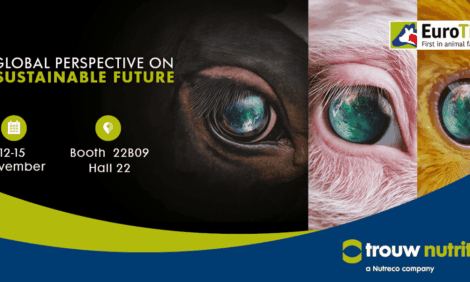



No Environmental Impact of Zn, Cu Used in Nutrition
EU - Overall, the environmental risks are generally acceptable at the current time with regard to zinc and copper in animal nutrition, according to a new report from the European Food Safety Authority (EFSA).Copper (Cu) and zinc (Zn) are routinely used as additives in feed for livestock and aquaculture farming. During their use as feed additives, it is inevitable that Cu and Zn will be released to the environment. Under Regulation (EC) 1831/3003 (EC, 2003), in order to protect human health, animal health and the environment, feed additives should undergo a safety assessment through a Community procedure before being placed on the market, used or processed within the Community. This project therefore assessed the environmental impact of Cu and Zn arising from use as additives in feed for livestock and aquaculture animals.
The environmental risks of Cu and Zn arising from aquaculture were assessed using simple exposure models recommended by EFSA. Concentrations of Cu and Zn in marine sediments, arising from the use of feed additives in sea cage aquaculture, were 21.3mg/kg and 182mg/kg, respectively. Concentrations, estimated for different fish types farmed in raceways/ponds/tanks and recirculation systems, ranged from 12.1 to 12.5µg per litre for Zn and 1.13 to 2.96µg per litre for Cu. For all fish species in the cage, raceway/pond/tank and recirculating systems, predicted concentrations were below predicted no effect concentrations (PNEC), indicating that the use of both metals in feed additives for fish poses an acceptable risk to the environment where these types of facility exist. It is important to recognise that exposure concentrations used for this assessment are likely to be highly conservative.
A more complex modelling approach was used for assessing the risks of inputs of Cu and Zn from livestock treatments. The assessment utilised the Intermediate Dynamic Model for Metals (IDMM) and soil/agriculture and water chemistry scenarios that were selected to represent the agri-environment conditions that are likely to be experienced across European Member States.
For copper, a risk of exceeding the soil PNEC was only found for the long-term exposure simulations (50 years) for manure derived from piglet rearing, in seven scenarios. In only two of these scenarios is swine rearing locally significant. Risks of exceeding the soil zinc PNEC were predicted at fewer sites than for copper, but the number of manure types whose continuous application presents a risk of excess was larger. This is particularly so in the most sensitive scenario where the application of most manure types for 50 years was predicted to result in PNEC excess. This is largely due to the ecological sensitivity of this acidic sandy soil to zinc accumulation, as indicated by the low PNEC of 31 mg Zn/kg soil.
Risks of exceeding the freshwater PNECs were fewer than those for soil, particularly for copper where only one potential excess was identified. This is due to the relatively strong retention of copper by soils, resulting in only small predicted increases in average surface water concentrations in response to manure application. In contrast, leaching of zinc in drainage and runoff was more pronounced in response to increasing manure application. In the extreme case of an acidic sandy soil, the surface water PNEC was predicted to be exceeded after 10 years by the continuous application of any manure type. Apart from this scenario, zinc concentrations in surface waters tended to be more sensitive to application rate in the run-off scenarios rather than the drainage scenarios, although this does not necessarily lead to potential risks within the considered time-frame.
Overall, the livestock evaluations indicated that environmental risks are acceptable at the current time but in the future risks could occur in some systems. The systems most vulnerable to metal input in manure were clearly acid sandy soils, represented in the scenarios. The distribution of these scenarios within Europe is largely in Flanders, the Netherlands, northwestern Germany and Denmark. There is a clear need to better establish whether such soils are as sensitive to metal inputs as is predicted here, for example by field surveys of copper and zinc concentrations in drain-flow from fields with known histories of metal input rates. Since problems of high metal concentrations in drain-flow and run-off, once established, would be difficult to remedy, it is important to proactively assess soil sensitivity before setting policy on manure application.
TheCattleSite News Desk


